Spending Christmas in Italy is a recipe for a truly unforgettable festive season.
With authentic local traditions zealously preserved, lively Christmas markets taking over the historic centres of the Italian cities and towns, and whole communities setting up large Nativity Scenes, being in Italy at Christmas is to experience fully the season of joy and goodwill.
The best of it all is that the Holidays in Italy last a month. The traditional Italian Christmas season begins on the 8th of December. This is when the Italians set up their Nativity scenes and decorate their homes. It then goes on until Epiphany on 6th January when Befana – an old lady with a long nose – flies in on her broom to bring sweets (and a piece of carbon) to Italy’s kids.
Even better, Christmas markets open in November. Some events – like living Nativity scenes and exhibitions of Nativity scenes – may continue until the end of January. Ice rinks often stay put all the way to the start of February. So, you can visit Italy at any point during its long festive season and feel the spirit of Christmas in the air and in your heart.
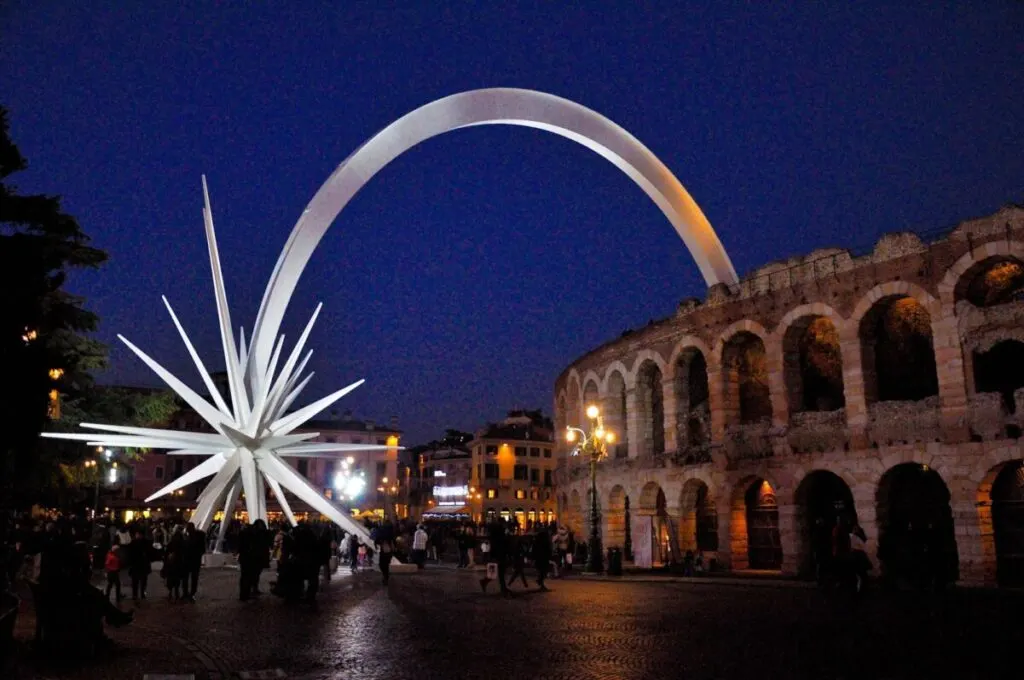
Plus, everything is happening under the gorgeous lights that get draped over Italy’s historic squares and streets. Ice rinks pop up next to medieval castles and Renaissance palaces so that you can skate around while enjoying the view of their beautiful facades. The Italian mountains get a nice blanket of sparkly snow. Handmade products made by Italian artisans make for great gifts. And when you need a boost of festive energy, here comes the perfect Christmas delight – a slice of panettone and a cup of gooey Italian hot chocolate!
While most people think of Italy as a summer destination, in fact, it is a place that really must be seen during the Christmas holidays. This is when you can feel the authentic spirit of the country and experience centuries-old customs in ancient settings where they were first shaped.
So, if you have ever wondered what happens in Italy at Christmas, here is a very helpful list. It distils my six Christmases spent in Italy and gives you the pointers you will need to organise your own Italian Christmas adventure.
Christmas concerts, Nativity Scenes, bagpipe music, Santa Runs, Christmas villages, Christmas illuminations… Everything is covered! Including delicious Italian Christmas sweets and fruit loaves as well as a Christmas vocabulary to make you feel warm and fuzzy inside when you wish Buon Natale! to people in perfect Italian.
Have a look!
Italian Christmas – 15 Best Things to Do, Eat, and Enjoy for the Holidays in Italy
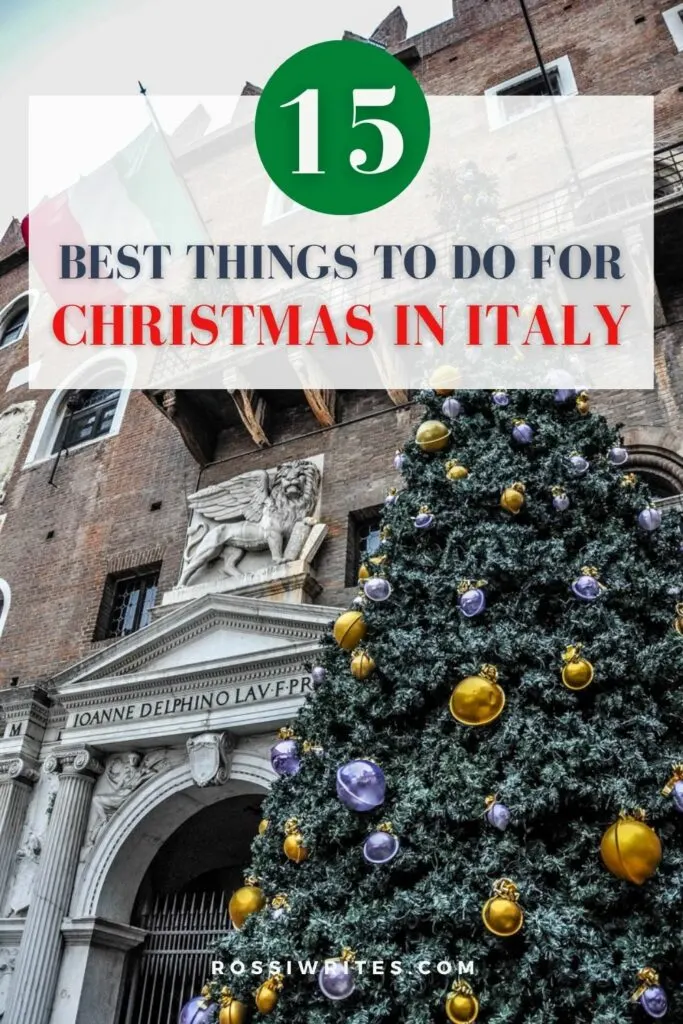
1. Shop at Italy’s Christmas Markets
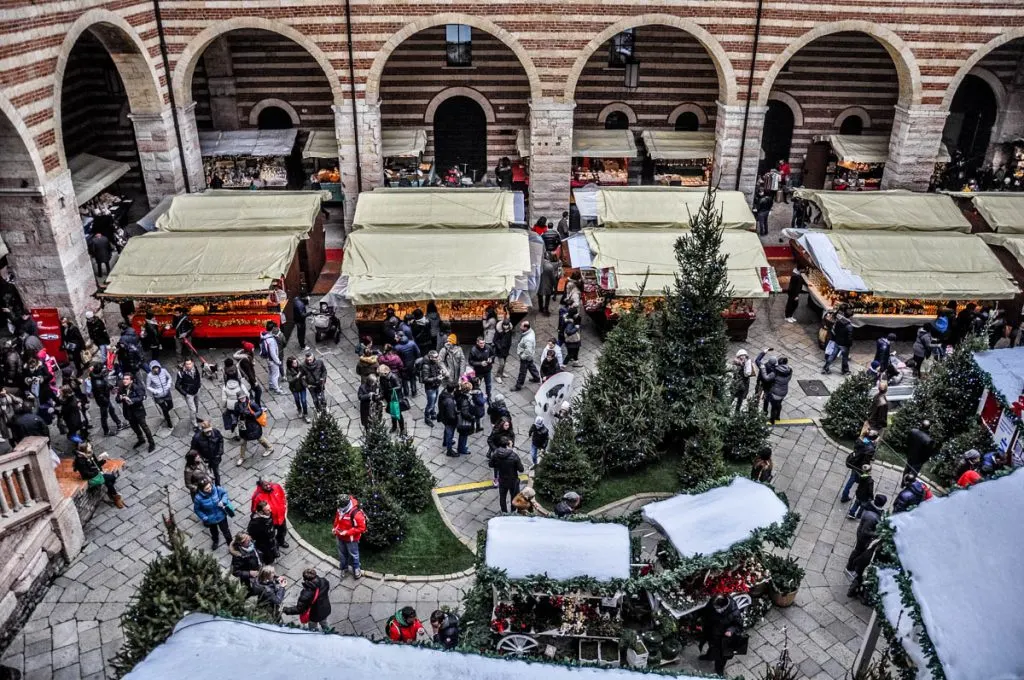
Italy’s Christmas markets are a lot of fun. Selling a selection of rustic arts and crafts in addition to having many food stalls, they take over the historic centres of the Italian cities and towns from the end of November all the way to Epiphany on the 6th of January. You can buy a selection of nice and thoughtful gifts, eat your weight in Christmas nougat and sweets, and just feel part of the festive hubbub.
While German and Austrian Christmas markets are often cited as the best, it would be a shame to skip the ones held in Italy. The most famous ones are in the Autonomous Northern Italian region of Trentino-Alto Adige. Bolzano, Merano, Trento, and Levico Terme there have truly lavish Christmas markets that attract thousands of visitors. The ones in Rome and the Italian regions of Piedmont and Lombardy are also excellent.
Bear in mind that the size of the Italian city or town is not indicative of how good their Christmas market is going to be. You will find that many small towns and even villages in Italy have wonderfully decorated Christmas markets with a huge variety of stalls selling artisan products. A case in point is Grazzano Visconti – a small village in the region of Emilia-Romagna. Another good option is the town of Ala in Trentino where the Baroque palaces in the historic centre become a large Christmas market every festive season.
For a long list with Christmas markets to see and shop at yourself, have a look here: Christmas Guide for Northern Italy – The Ultimate List of Christmas Markets, Events, and Happenings.
For some great ideas as to what to buy this festive season in Italy, have a look here: Christmas Markets – Best 5 Things to Buy.
Every year that I spent living in Italy, I looked forward to the Christmas markets. My favourite was the one in the historic centre of Verona. It was so easy to reach from my house in Vicenza and it had so many wonderful things to shop, eat, and browse. Often, I would take the train for the 40 minutes ride to Verona, spend a couple of hours at the Christmas market there and be back in time for school pick-up.
Then, on weekends, we would travel to small villages and towns a bit further afield to see their Christmas markets and drink in their Christmas atmosphere. The Christmas markets in the towns around Lake Garda were especially lovely. You can read more about them here: Christmas at Lake Garda – A Great Italian Day Trip.
2. Admire Italy’s Christmas Decorations and Illuminations
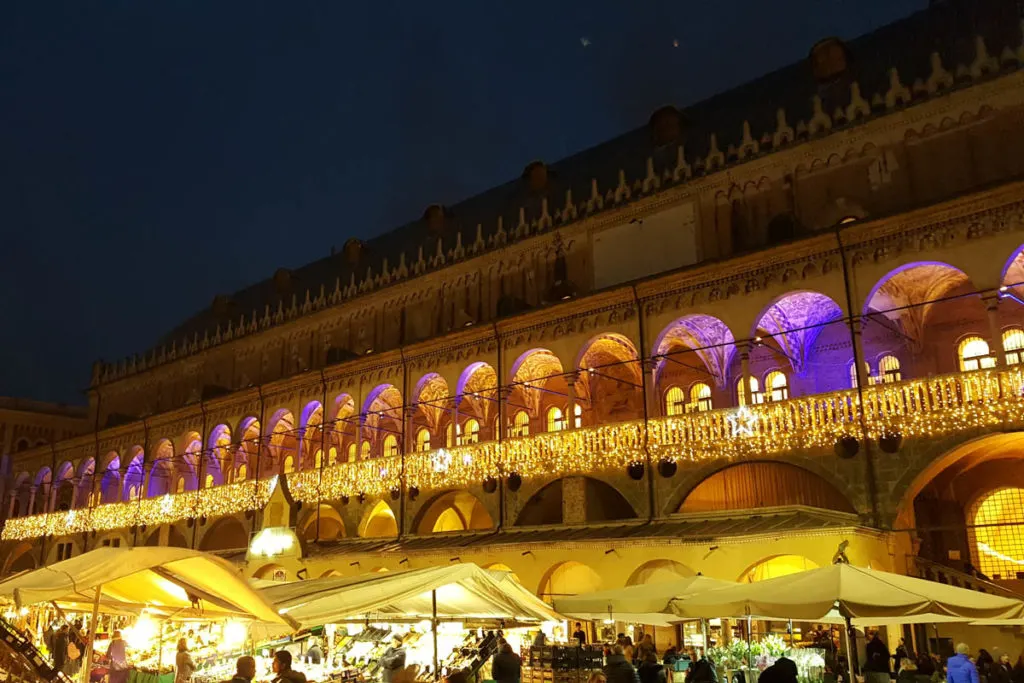
Italy goes out of its way to deck the halls for Christmas. Cities and towns get draped with lavish festive decorations.
Turin, for example, is especially famous for its Luci d’Artista – a city-wide open-air art display with huge installations made of hundreds of lights and designed by eminent Italian and foreign contemporary artists.
A huge shooting star gets attached to Arena di Verona – a Roman amphitheatre that is older than Rome’s Colosseum. It symbolises the star which led the Three Wise Men to the birthplace of Jesus. The metal star has been erected in Piazza Bra every year since 1984 and it has become an intrinsic part of the Christmas experience in Verona. The structure is 70 metres high and it weighs a staggering 78 tonnes.
The town of Como on Lake Como turns especially beautiful at Christmas thanks to its annual event Citta’ dei Balocchi. This is when the buildings in town are illuminated with stunning light projector displays.
In addition to the thousands of lights draped across streets and cascading down elegant facades, more and more Italian cities and towns embrace the light projector displays as a form of unique Christmas decoration. Projectors beam falling snowflakes, rolling festive greetings, and Christmas images on medieval castles and Renaissance buildings.
This mix of new technologies and old architecture creates a truly mesmerising effect. Walking through the historic centre of a festively decorated town in Italy, you truly feel the Christmas spirit filling up your heart.
I loved the Christmas lights that would be hung each year around the cities of Veneto – the Northern Italian region I called home between 2014 and 2020. Come December, I would take the train for the quick journeys from Vicenza to respectively Padua, Venice, and Verona to see how they were decorated for that particular Christmas and to enjoy their festive atmosphere.
Have a look at this blog post – Padua in the Run-Up to Christmas – to read about one such trip.
3. Go for a Nativity Scenes Walk at Christmas in Italy
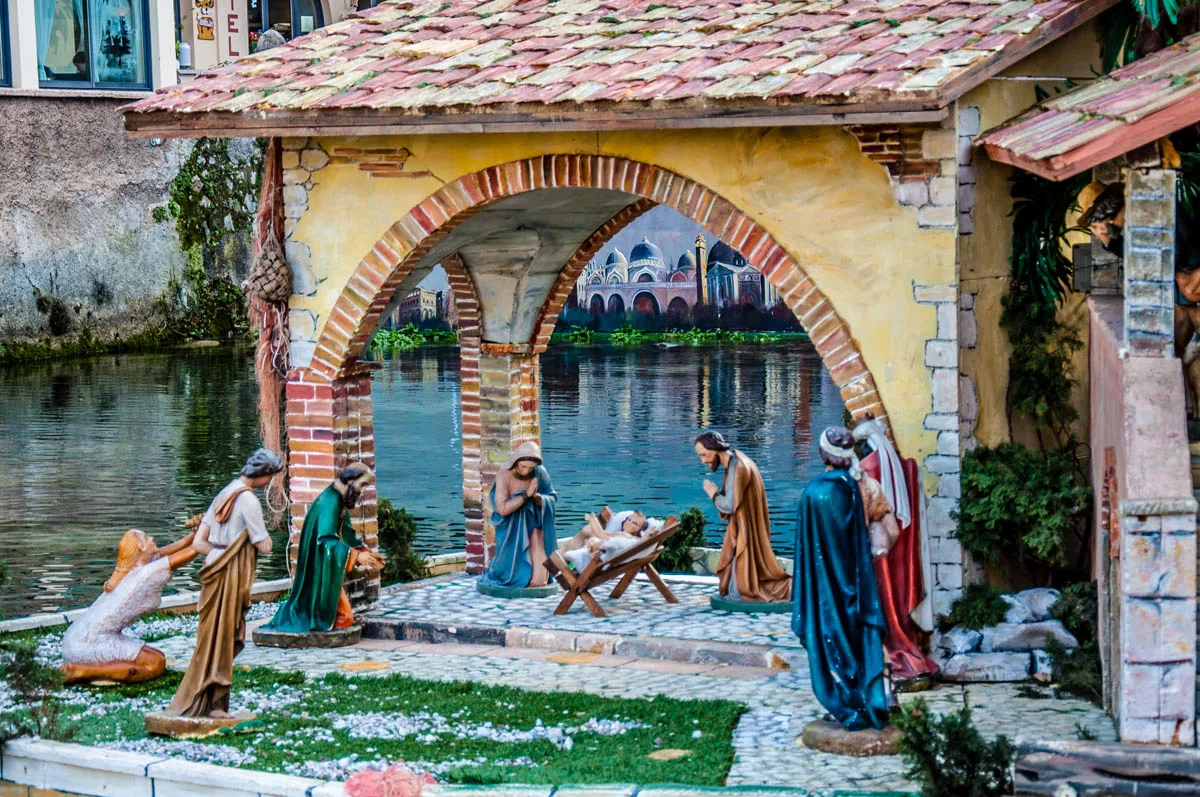
Nativity scenes are the focal point of Italy’s Christmas decorations and spirit. Also known as a manger scene or a crib in English, they are called presepio or presepe in Italian and are carefully arranged in churches, city squares and private homes all over the country.
The Nativity scenes represent the Holy Family in the stable. They can be small with tiny figurines or human-size. Often, the whole town of Bethlehem is recreated in minute detail around the stable – from the houses to the marketplace with all sorts of stalls and craft workshops with figurines of people going about their daily life.
It is interesting to note that these Nativity scenes often reflect Italy’s local customs and traditions. Don’t be surprised if, for example, you see one with market stalls selling Italian cured meats and cheese or another with a bunch of Arlecchini with masks standing right next to the stable. This blog post explains the reasons for this: Presepe or 15 Facts about Italy’s Nativity Scenes – History, Traditions, and Meaning.
During the festive season, exhibitions of dozens and even hundreds of Nativity scenes take place all over Italy. One of the most famous ones is the International Exhibition of Nativity Scenes which has been held each December/January in Arena di Verona for more than three decades. It showcases over 400 cribs from all around the world arranged under the internal arches of the Roman amphitheatre.
Otherwise, Italy’s villages, towns, and cities set up Nativity scenes in front yards, at roundabouts, on the shores of rivers and streams, in churchyards, in the roots of trees, on top of centuries-old stone walls, in shop windows, inside the darkened rooms of abandoned houses, in the middle of sprawling historic squares, and even underwater. Going for a walk around a town in Italy or for a hike to a small Italian village in order to see its Nativity scenes is a lot of fun.
A famous Nativity scenes hike takes you to the small medieval village of Campo di Brenzone above Italy’s largest lake – Lago di Garda. Almost entirely abandoned, the village comes alive in the months of December and January each year when hundreds of people hike to it to see the many Nativity scenes positioned around the village. I had the chance to do this great Christmas hike myself and you can read all about it here: Campo di Brenzone – A Great Day Trip to a Medieval Village in the Hills Above Lake Garda, Italy.
For more such walks and hikes, please, check the heading Nativity Scene Displays and Exhibitions in this blog post. It will give you some great ideas for places to go to in Italy to admire beautiful handmade Nativity scenes in stunning settings.
4. Experience a Living Nativity Scene at Christmas in Italy

Living Nativity scenes are one of Italy’s most curious and delightful things to experience at Christmas.
Groups of local volunteers stage elaborate representations of the Christmas story in caves, on town squares or as a procession along a city’s main streets. Often hundreds of people take part and recreate in minute detail the town of Bethlehem on the eve of Christ’s birth.
Dressed in full costume, they set up small scenes showing how people used to live over 2,000 years ago. There are bakers, blacksmiths, shepherds, washerwomen, merchants, noblemen, and Roman soldiers. Every social stratum of Bethlehem is represented. Some of the larger Nativity scenes even set up small ponds where fishermen catch fish and ovens where bakers prepare bread all day long. There are also animals like chickens, goats, sheep, and even newborn lambs for added authenticity.
Spectators walk past the different scenes of the living Nativity until they reach the specially recreated Nativity grotto. This is where an infant stands in for Baby Jesus in the arms of his doting mother. She is dressed as the Virgin Mary and is surrounded by Joseph, the Three Wise Kings and a cohort of shepherds. Often, the grotto is an actual cave, a small specially built hut or it could be inspired by a particularly famous Italian painting of the Nativity.
The world’s largest living Nativity Scene takes place outside of the small village of Genga in the Central Italian region of the Marche. Spreading over 30,000 sq m, over 300 people of all ages take part in it. A few years ago, the clothing of all the participants and the decor of this spectacular in its size and devotion living Nativity scene were inspired by the painting The Adoration of the Magi of the local artist Gentile da Fabriano. Nowadays, this precious work of art is in the Uffizi Gallery in Florence.
Anywhere you go in Italy, there will be a living Nativity scene taking place during the Christmas season and more often than not right after Christmas Day and on Epiphany. They are a wonderful celebration of the miracle of Christmas and a great way to experience Italy’s authentic community spirit.
A couple of years ago, I loved seeing the Living Nativity in the small town of Castelfranco Veneto in Northern Italy. A three-month-old baby girl blissfully slept in the manger while her proud mommy and daddy stood in as the Virgin Mary and Joseph. Roman soldiers walked around Castelfranco Veneto’s historic centre and Bethlehem’s artisans had set up their workshops in the shadows of the town’s medieval defensive walls.
There was nothing more Christmassy than walking around, talking with the people in costume who were taking their roles very seriously, and drinking cups of lovely hot chocolate while thousands of lights cascading down the town’s walls and towers flickered and sparkled in the night.
5. Listen to a Zampognaro at Christmas in Italy
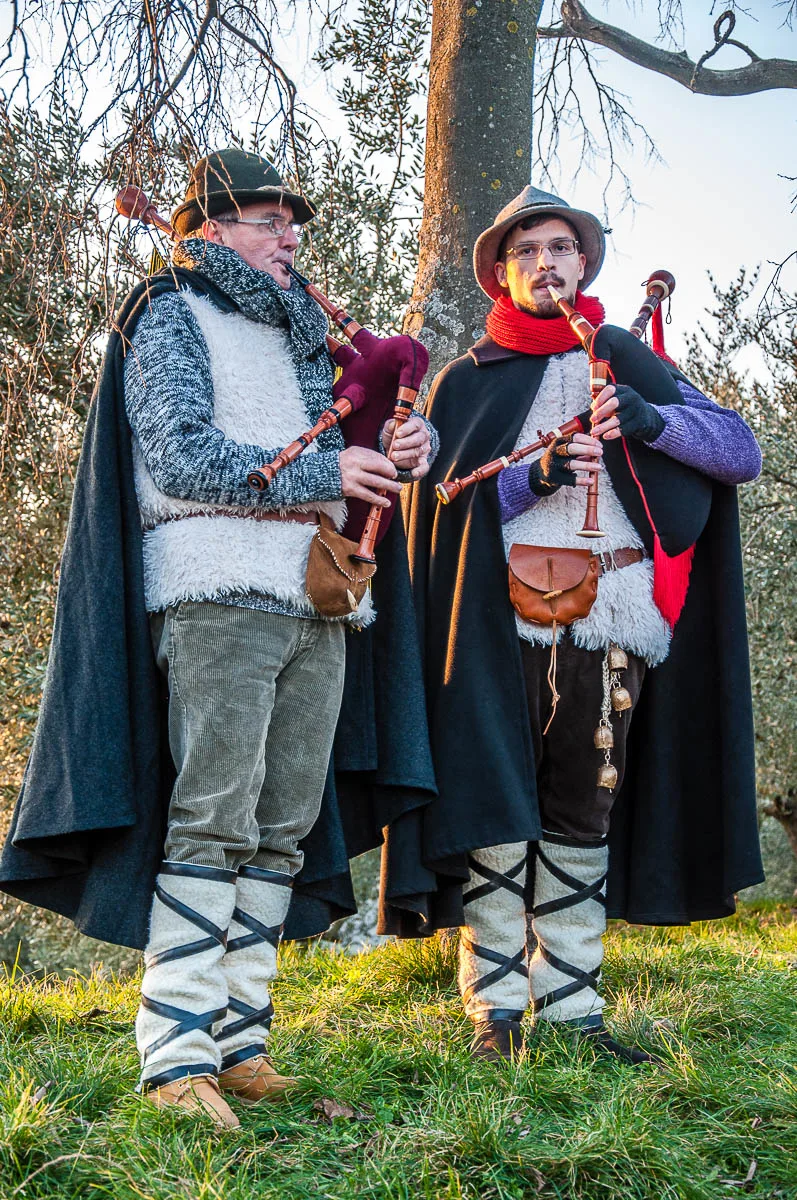
Bagpipe players called zampognari can be seen performing on the streets of Italy’s cities and towns in the days before Christmas. With heavy cloaks around their shoulders, they play beautifully on their bagpipes extracting a myriad of musical emotions.
In the past, the zampognari were shepherds that came down from the mountains during the Christmas period. They played music on their zampogna – a type of bagpipe – to celebrate the festive period with their families and the people of their village. Nowadays, their descendants continue in their steps. They may no longer be shepherds themselves but they preserve the old melodies and perform them at Christmas as a wonderful throwback to Italy’s rustic traditions.
You can usually see a zampognaro playing at a historic piazza, a living Nativity scene or a Christmas market. They say that the tradition is stronger in the South of Italy but I have also seen zampognari in Veneto in the north of the country.
I loved seeing the zampognaro who each year would come to Vicenza from the nearby mountain town of Asiago. He played beautifully on the city’s central Piazza dei Signori, his music filling the large square, and reverberating across the Palladian facades.
A few years ago, I listened in awe to the two zampognari who performed for the crowds waiting to see the Living Nativity in the Villaga Caves. It’s a precious memory of my Italian life!
6. Take Part in Italy’s Festive and Fun Santa Runs
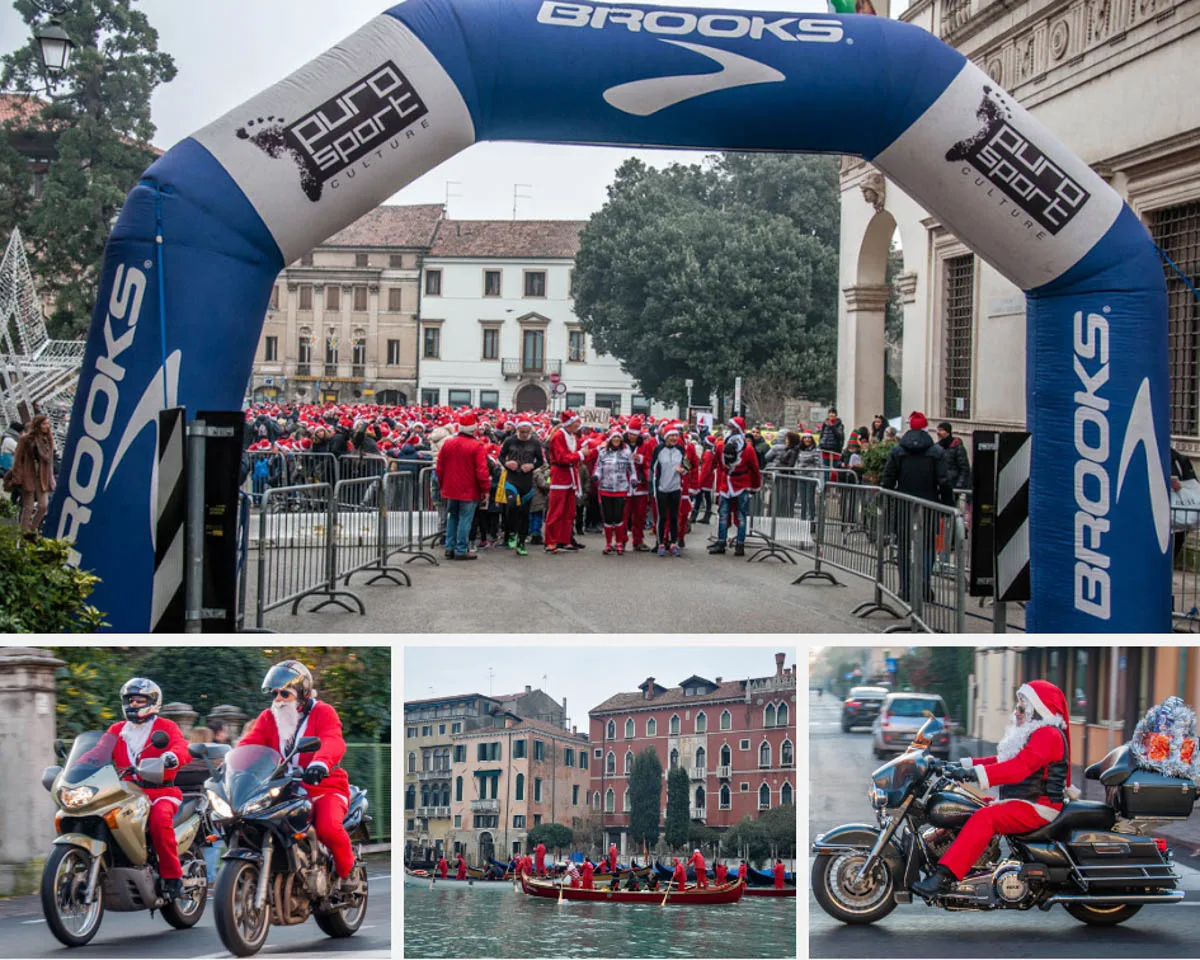
The Italians love sports and having fun, so the worldwide famous Santa Runs have really taken deep roots in Italy.
A Santa Run is a non-competitive race where each participant wears a Santa suit and hat. Imagine hundreds of Santas running up and down Italy’s curving medieval streets and across Italy’s historic squares and you get the idea of why these events are a must-see during the Holidays in Italy. In Italian, they call them La Corsa dei Babbi Natale and they are a lot of fun to watch and take part in.
To participate, you need to pay a small fee which provides you with a Santa suit and a piece of panettone with a cup of hot chocolate at the finish line. Santa Runs are staged in many of the larger and smaller Italian cities – from Turin and Milan to Vicenza and Verona. You can read more about them in this blog post: La Corsa dei Babbi Natale – The Funtastic Santa Runs Taking Over Italy Every Christmas.
It has to be said that the Italians like to take things and make them better, so the simple Santa Run has evolved to some unique local events here. For example, each December in Venice, there is a Santa regatta with participants dressed as Santas rowing traditional Venetian boats on the Grand Canal.
In the town of Mirano in Veneto, on the other hand, you can have fun at the MotoBabbo event. This is a Santa motorbike race where each biker is dressed as Santa and his or her motorcycle is adorned with baubles, tinsel, and even whole Christmas trees.
There is nothing like seeing hundreds of Santas on hundreds of motorcycles of any size and brand (plus iconic Vespas!) roaring down the street. I took this little video of the event in 2018. Enjoy watching it!
7. Indulge in Italy’s Best Christmas Combo – Hot Chocolate and Panettone
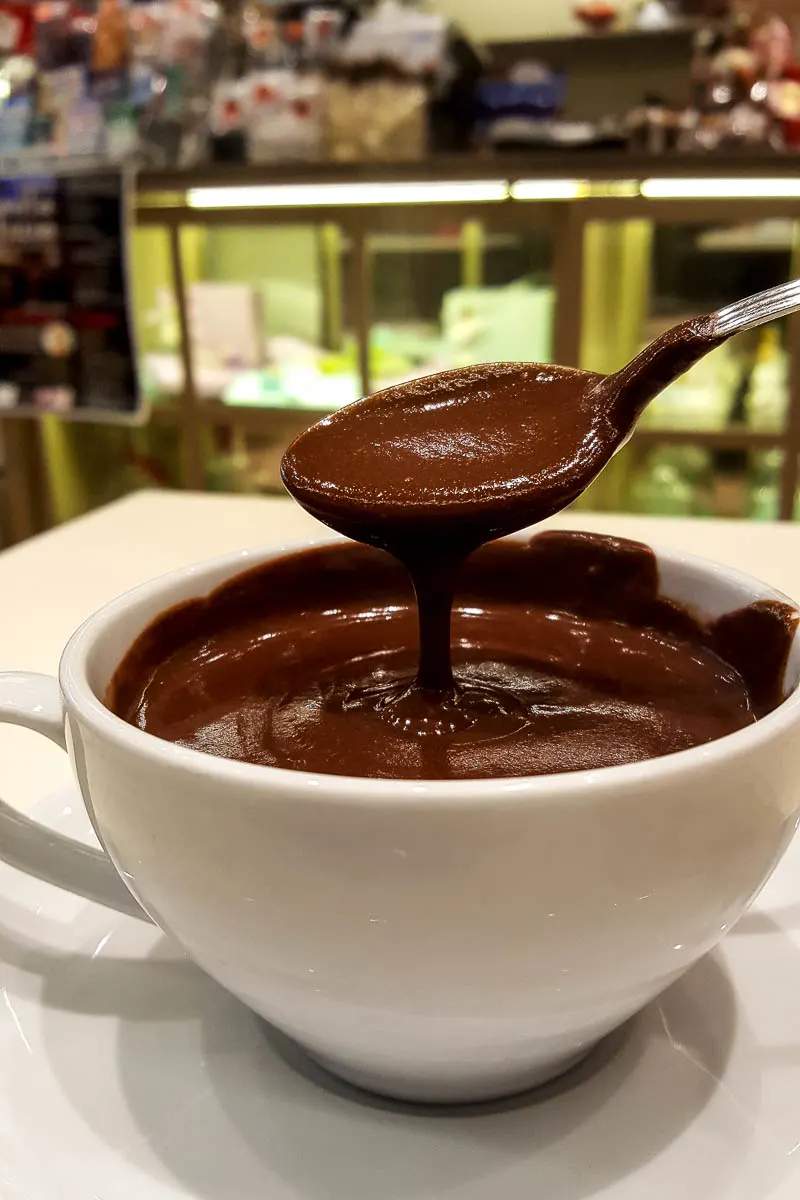
Hot chocolate and panettone is a marriage made in Italian Christmas heaven! Make sure that you enjoy it as often as you can when you spend Christmas in Italy.
Panettone is one of Italy’s traditional Christmas fruit loaves. Loved and devoured all over the world, you will find it in the Italian supermarkets and delis from around the start of September to the middle of January. Nowadays, panettone comes in many different flavours yet there is nothing as good as a slice of classic panettone with juicy raisins and sticky, chewy pieces of candied orange peel. You can read more about it in this blog post: Panettone – Traditions and Secrets of the King of the Italian Christmas Table.
Hot chocolate in Italy is a whole different game. Incredibly thick and not overly sweet, it is served in small cups and has a deeply satisfying flavour. I love it with a nice scoop of freshly whipped cream on top.
You can buy a slice of panettone and a cup of hot chocolate at many Christmas events in Italy. This delicious combination costs around three euros or so. It really gives you a quick boost of warm energy on a cold day, so that you can continue your festive explorations of all that the Italian Christmas has to offer.
You will also see that people attending the midnight mass on Christmas Eve in churches in Italy often enjoy a piece of panettone and a cup of hot chocolate after the end of the service. Offered for a small donation by the scouts or other local organisations, it is a great way to keep the community spirit high.
8. Shop for Italian Christmas Food
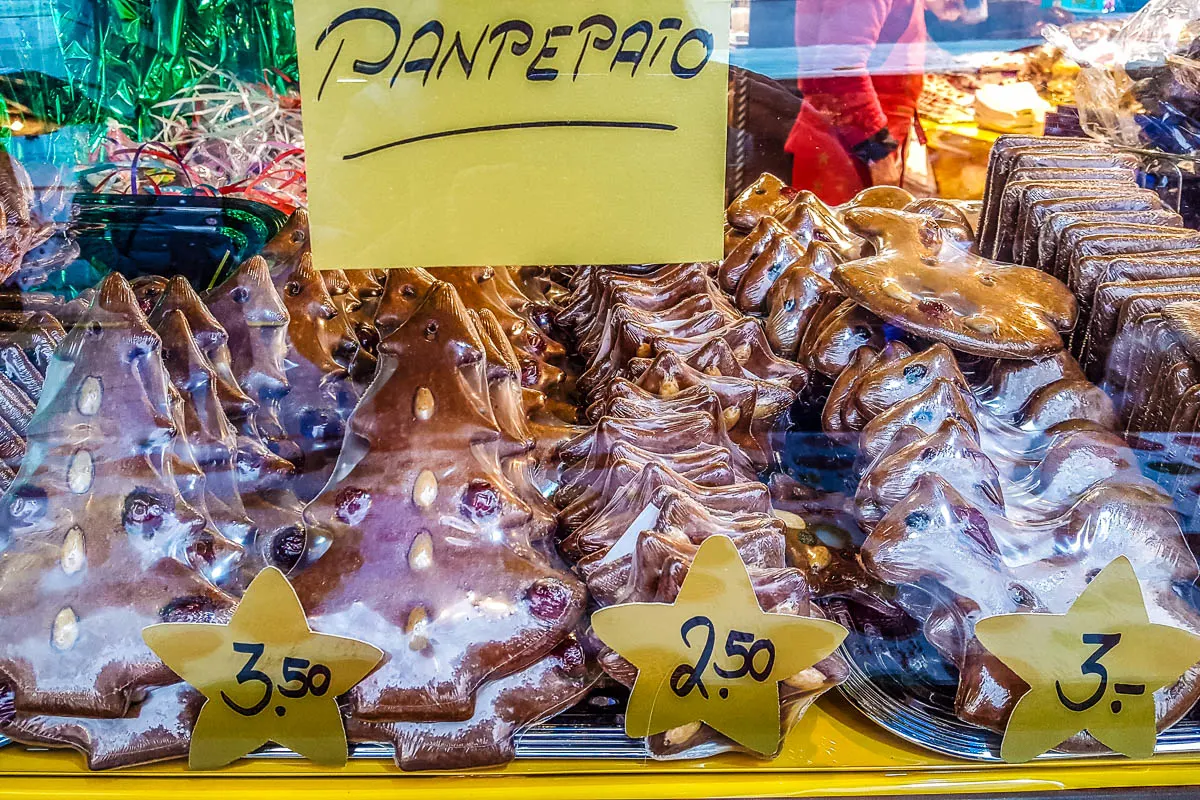
Panettone and hot chocolate are not the only Christmas delights you can enjoy in Italy.
There is a large selection of traditional Christmas foods and drinks you can tuck in here. Many of them also make for wonderful Italian food gifts to take home with you after your Italian holiday. Some of the best are as follows:
- Stincotto – this is a confit-style slow-braised cut of pork leg. You will see it sold in vacuumed packs inside nicely designed cardboard boxes all throughout the festive season. Don’t be put off by its name. Stincotto is actually quite nice and very easy to warm up at home.
- Pandoro – invented in Verona, this is a tall, star-shaped sweet bread which is served sliced and sprinkled with icing sugar so as to look like the snow-covered caps of the Dolomites. Newer varieties of pandoro are now being sold with chocolate and custard fillings.
- Panforte – this is a dry compact cake made of honey, spices, candied fruit, and almonds. It is typical for the Tuscan city of Siena but it can be found in other corners of Italy, too.
- Panpepato – typical for Central and Northern Italy, this is a cake/biscuit made with fruits, nuts, pepper, nutmeg and citrus zest. Sometimes, it’s also covered in chocolate.
- Torrone – traditional Italian nougat which can be either soft or hard and is enriched with nuts, chocolate, and candied fruit. For the best torrone, ask for Mandorlato Veneto (you can read more about it in this blog post) or Torrone di Cremona. The former is produced in the small town of Cologna Veneta in the region of Veneto and the latter is a staple of the town of Cremona in the region of Lombardy. Both towns organise famous torrone markets during the festive Christmas season.
- Marron Glace’ – these are whole chestnuts that have been boiled in sugar syrup. They taste truly divine and are sold in elegant boxes or wrapped individually. In some patisseries in Italy, they also make their own.
- Vin brule’ – mulled wine is a staple at every self-respecting Christmas market in Italy. Smelling and tasting like Christmas in a cup, enjoy it responsibly!
With the exception of the vin brule’, you can easily buy and stash in your suitcase the rest of the above Italian Christmas products. They make for wonderful edible presents that you can share with others or keep for yourself as a little something to remind you for a few weeks of your time in Italy.
Traditional Italian Christmas foods are sold everywhere during the festive season in Italy – from the small delis to the large supermarkets. Their price points vary according to the brand and its prestige. While you can easily find supermarket panettone or pandoro for 3 to 5 euros a pack, an artisan panettone made by a small patisserie or a renowned artisan producer can cost as much as 20-30 euros. You can, of course, always order it online, too.
N.B. If you are planning to take a stincotto or two with you, please, make sure that the country you will be returning to after spending Christmas in Italy, allows you to bring in meat products!
9. Enjoy a Twirl on the Ice Rink during the Holidays in Italy
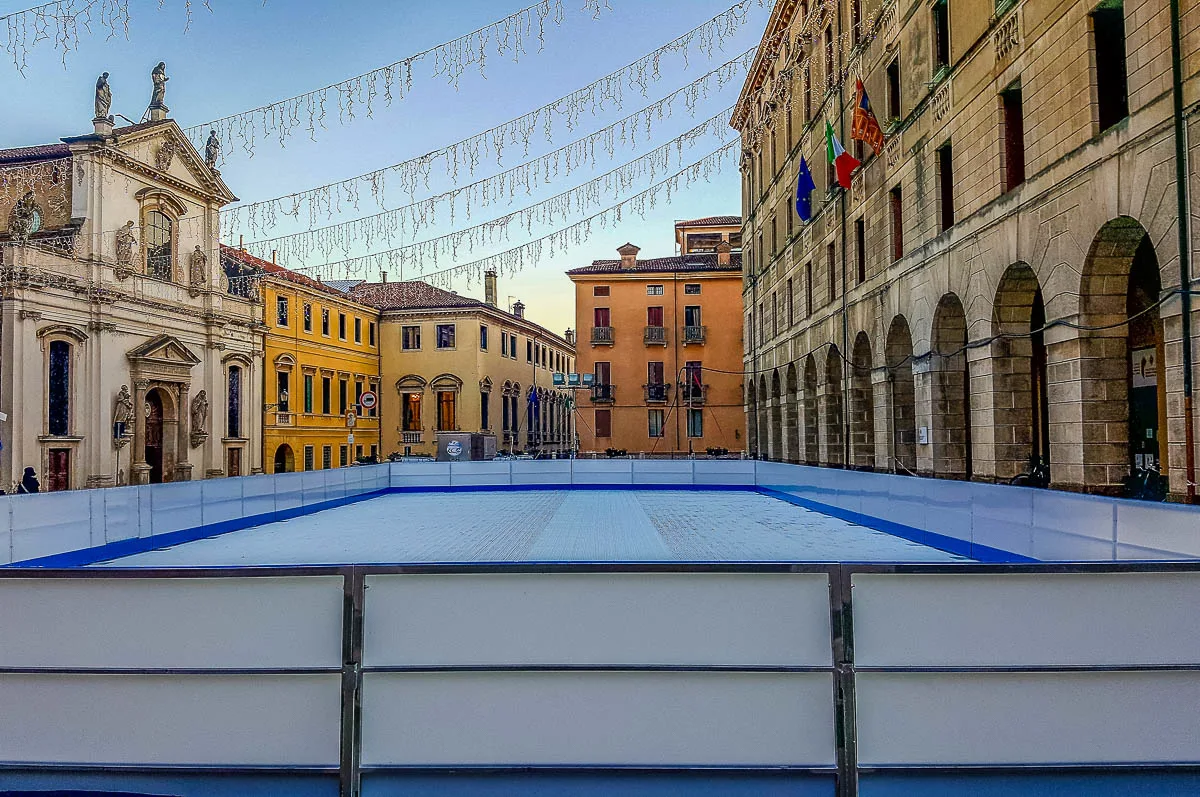
Small ice rinks sprout like mushrooms in many of Italy’s towns and cities during the festive Christmas season.
They are a lot of fun!
Thanks to Italy’s ice rinks, skating became one of my family’s most beloved Christmas traditions. Even I who am not the world’s most athletic person and am afraid of falling down and making a spectacle of myself would look forward to our ice rink escapades.
Set in the historic centres of medieval and Renaissance towns, on the shores of Italy’s most beautiful lakes, and on some of Italy’s most famous piazzas, the ice rinks give you a chance to skate surrounded by some of the world’s most gorgeous architecture. Bear in mind that during peak slots they can get rather crowded. Pick the time of your visit wisely. The hours of riposo – Italy’s traditional long afternoon break – or late in the evening are usually the best.
You can rent ice skates on-site and for less than ten euros spend up to two hours on the ice. I also always rented one of those penguin- or bear-shaped supports (no shame!) to hold onto and I always had so much fun. Give it a try!
10. Go to a Garden Centre in Italy at Christmas
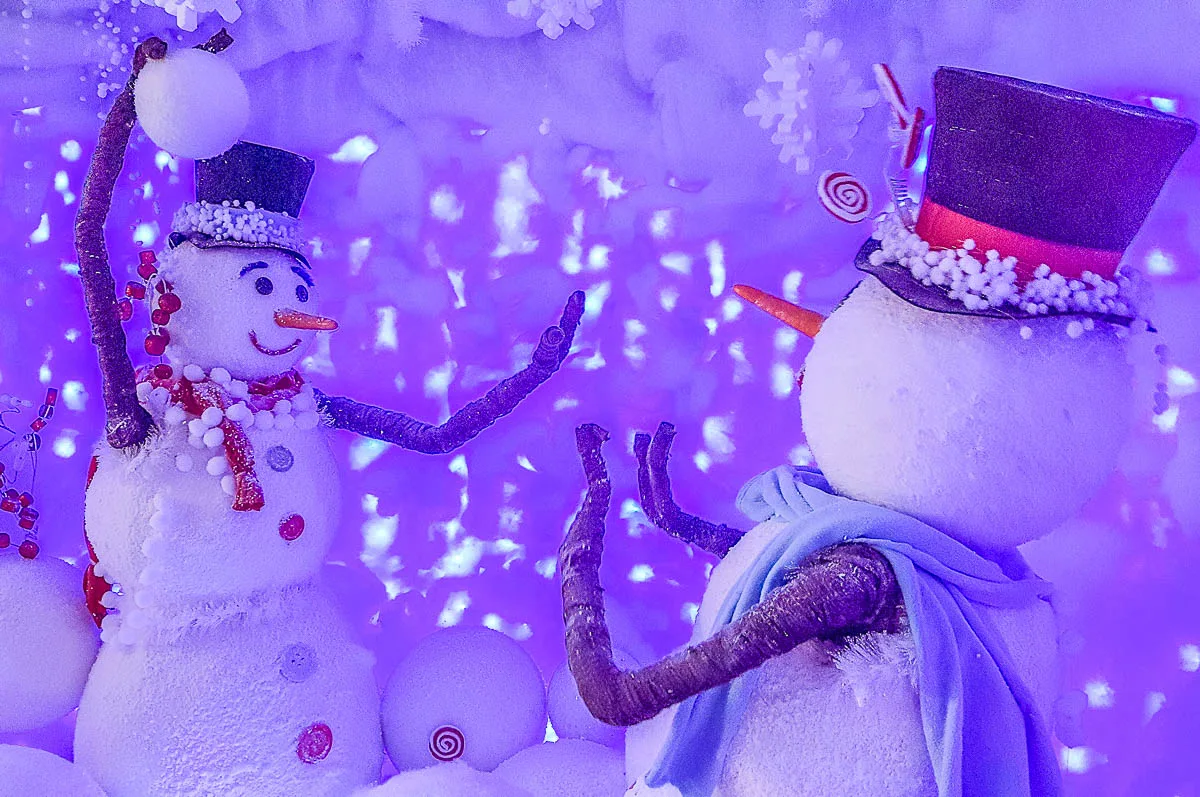
It’s a bit of a strange suggestion, I hear you say, but trust me on this. Italy’s garden centres are truly one of the best places to visit during the Holidays.
The Italians love flowers and plants and the whole country is dotted with huge garden centres which are heaven for any green-fingered and craft-loving person. Come October and these garden centres create veritable Winter Wonderlands by either transforming a large space into a Christmas shop or by turning the whole garden centre into one huge Christmas Village.
It’s magical!
There are themed rooms, animatronic displays, a huge variety of Christmas decorations, hundreds of different pieces and settings for Nativity scenes. Anything Christmassy, you will find it here!
The largest garden centres may also have visiting artisans and craftsmen, Christmas theatre performances, an ice rink, an electric train, a North Pole workshop, and Santa’s House.
My Christmas season in Italy always started in October when the Viridea Garden Centre just outside Vicenza would open its Christmas Village. A visit or two were a must for that early Christmas spirit and to check the latest styles and designs in Christmas decorations.
Another must was a visit later in the season to Flover – a large garden centre between Verona and Lake Garda. Flover always had the most amazing displays and their Christmas panto would leave me roaring with laughter. Plus, Santa Claus would come on stage after each performance, meet each child in the audience, take his or her letter to Santa, and give him or her a small present.
Many garden centres all over Italy stage wonderful Christmas events. Even if you don’t plan to shop big, it pays to visit one or two of them for the Christmas spirit and buckets of fun. You can see the Christmas Villages in Garden Centres heading in this blog post for some recommendations.
11. Enjoy a Christmas Concert during the Holidays in Italy
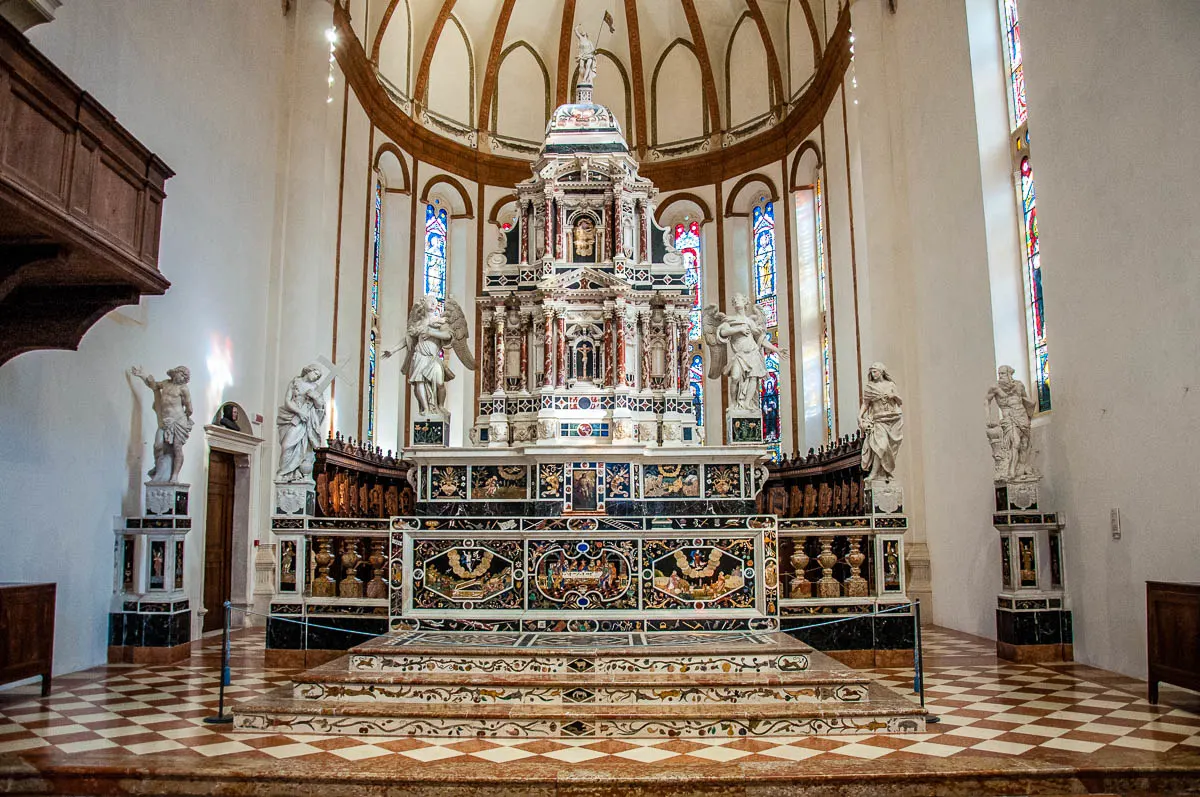
Hundreds of concerts take place all over Italy during the Christmas season. Held both in centuries-old churches like the Duomo in Milan and lavish opera houses like Teatro San Carlo in Naples, they fill the soul with cheer.
If you are spending Christmas in Italy, check at the local churches or ask at the local tourist centre for information about Christmas concerts taking place near you. Some will be free to attend (a donation may be appreciated), whereas others will be paid for.
Attending a Christmas concert in Italy is a wonderful way to embrace the spirit of the season. With the focus very much on the miracle of birth and love among people, Christmas music makes the heart soar. Especially, when you are listening to it in the splendid surroundings of a historical Italian church or a sumptuous Italian theatre.
The memory of my most favourite Christmas concert in Italy still brings a little tear of emotion to my eyes when I think about it. The concert was organised by the school where my child used to study. It was held in the Chiesa della Santa Corona – a 13th-century church built to house a thorn from Christ’s Holy Crown and nowadays, one of the most important sights in Vicenza.
Standing next to a huge painting by Giovanni Bellini, I watched the children’s choir burst into a heartfelt rendition of Gli Angeli nelle Campagne (Gloria in Excelsis Deo) and the church, full to the brim with parents and grandparents, listened with bated breath.
It was beautiful!
12. Go to an Italian Church for a Heartfelt Christmas Experience

Christmas in Italy is still very much about celebrating the miracle of Christ’s birth. The focus is not on consumerism and the number of presents bought but on being together and finding hope in the simplest of things.
Churches in Italy are always a wonderful destination, especially if you are interested in architecture, art, and history. At Christmas, they are a must-see for this is where you can feel the community spirit and understand a bit better how Italian families work.
In each church, you will find a beautiful presepe – a traditional Italian Nativity scene. Often, churches and monasteries organise whole exhibitions of Nativity scenes in addition to a rich programme of Christmas events. Concerts, festive religious services, charitable functions are the order of the day.
For me, I always loved visiting the churches in Vicenza and around Veneto as soon as the Christmas season started. I loved seeing their Nativity scenes. I loved looking at the works of art in the flickering light of the candles lit by the people who had come to say a prayer.
I am not religious in the traditional sense of the word and visiting a church in Italy during the Christmas season allowed me to observe a community that gets together in its faith. It gave me many things to think about, it made me see the beauty of the smallest things and even gave me some answers to certain questions I had playing on my mind at the time.
Seeing the Christmas season develop in the context of the Church and the different religious rites also gave me a better understanding of the iconography of the many Nativity scenes painted by the Italian masters. It was, in a way, seeing history, art, and humanity come together through the traditions and rituals that Italy has managed to preserve throughout the centuries.
13. Embrace Italy’s Five Christmas Gift Bearers
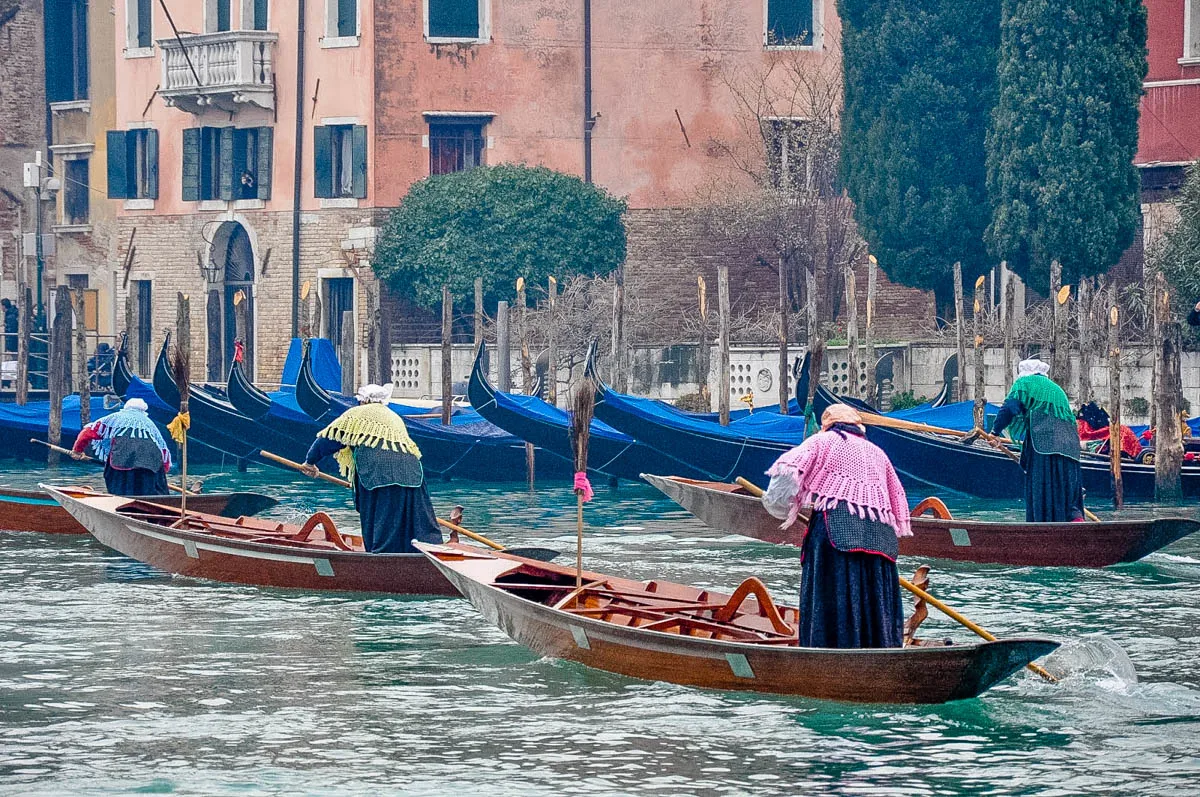
Did you know that there are five personalities bringing presents during the Christmas season in Italy? Yes! They are: San Nicolo’, Santa Lucia, Bambino Gesu’, Babbo Natale, and Befana.
You can read all about them in this blog post here: Italy’s Five Christmas Gift Bearers. Their stories are very interesting and their traditions are zealously kept in the different corners of Italy.
When you are in Italy during the festive season, put some time aside to attend the different local events dedicated to these five Christmas gift bearers. It could be the traditional market – I Banchetti di Santa Lucia – which is held in Verona around the 13th of December. Or it could be the Befana race in Venice (pictured above).
These local events add a beautiful touch of authenticity and a bit of whimsicality to the Italian Christmas experience.
During my six years in Italy, I grew particularly fond of Befana. Now that we live in England, I try to keep the tradition of a small gift of sweets and new books for my child each Epiphany. The traditions related to Santa Lucia (or St. Lucy as she is known in English) is another topic that interests me. I remember visiting the Church of St. Geremia in Venice where Santa Lucia’s body is kept in a glass coffin and I wrote this little piece about her and her day – 13th December.
14. Learn Christmas Italian
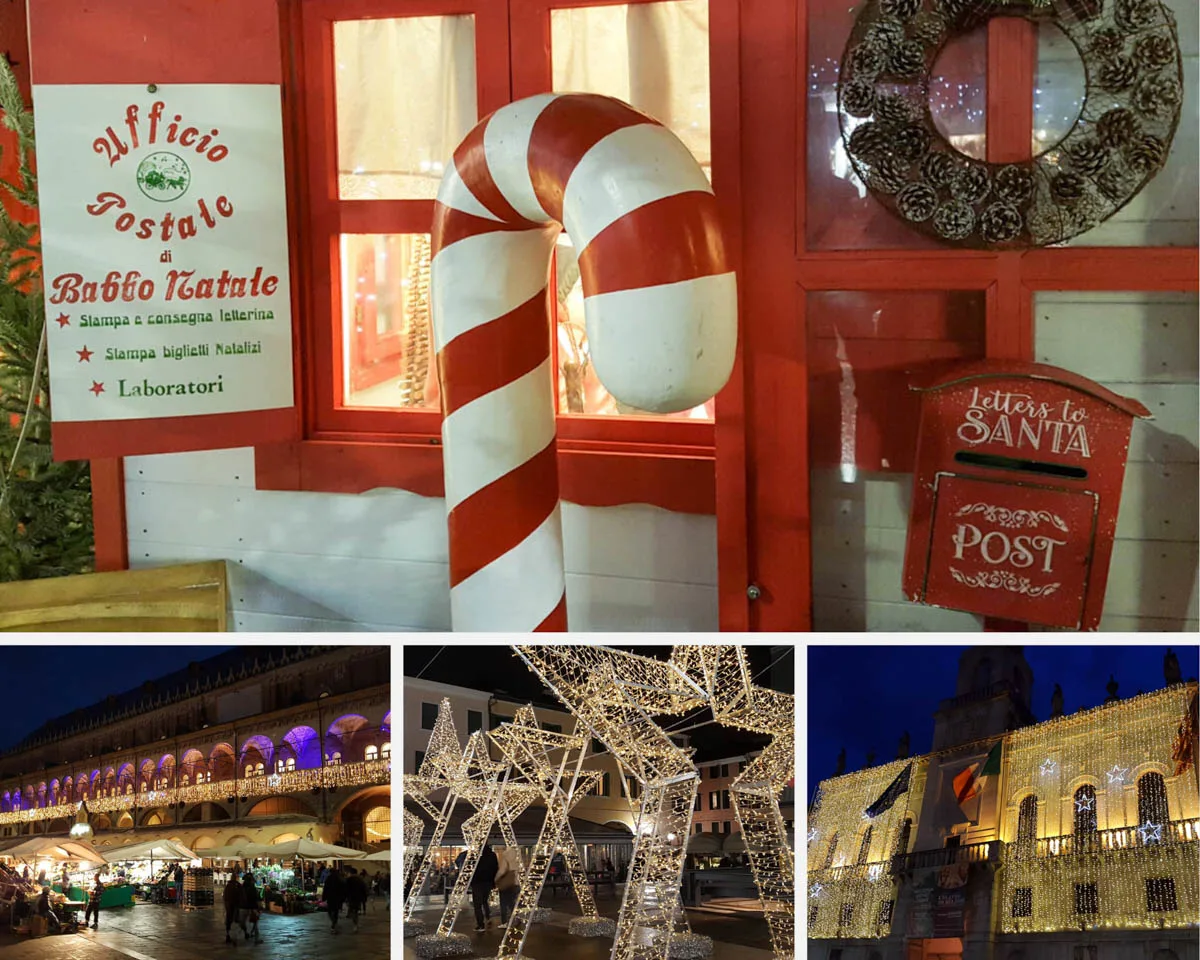
If you are in Italy for Christmas, embrace fully the spirit of the Holidays and feel closer to the local people by learning some Christmas Italian. Here is a useful selection of the most used festive words, phrases, and greetings in Italy:
La Vigilia – Christmas Eve
Natale – Christmas
Babbo Natale – Father Christmas
Santo Stefano – Boxing Day
Capodanno – New Year’s Eve festivities and New Year’s Day
Epifania – Epiphany
Buon Natale! – Merry Christmas!
Auguri! or Tanti(ssimi) auguri! – Best Wishes!
Buone feste! – Happy Holidays! / Season’s Greetings!
Felice Anno Nuovo! – Happy New Year!
Obviously, don’t forget the most important one:
Un’altra fetta di panettone, per favore! – Another slice of panettone, please!
15. Simply Relax and Enjoy the Italian Christmas Festivities with an Open Heart
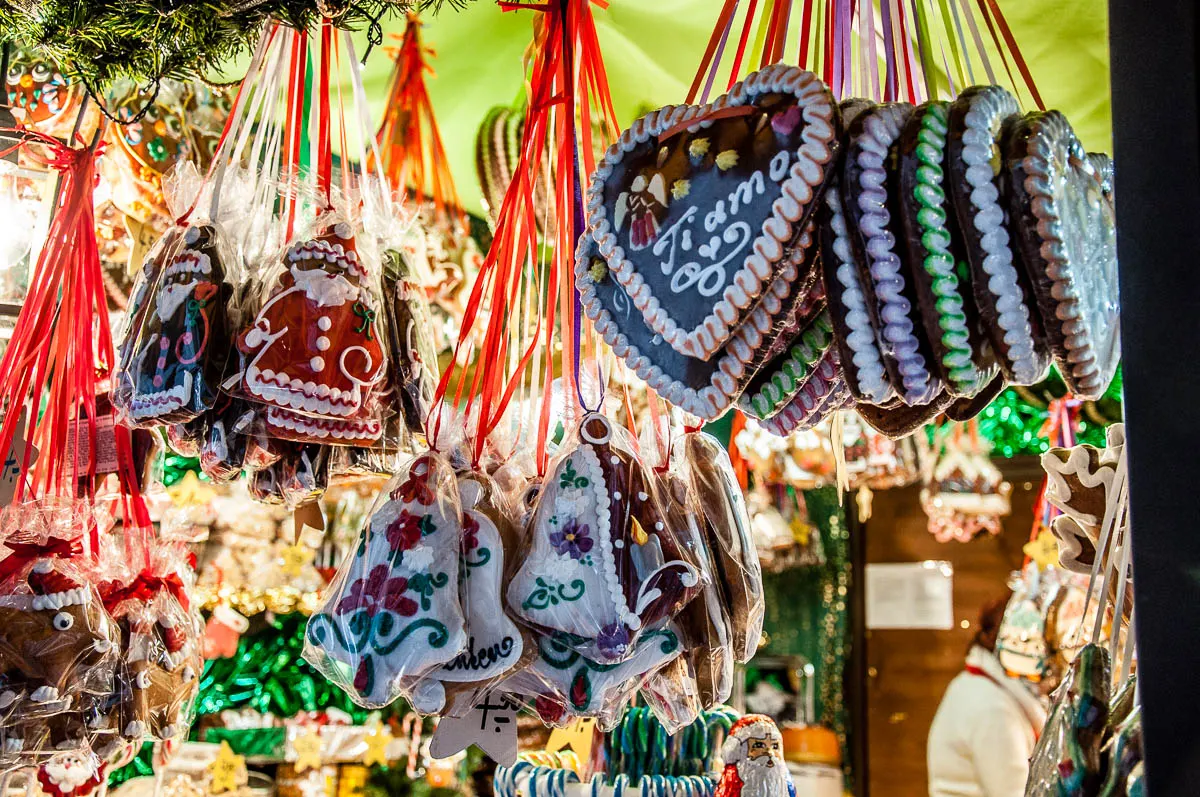
Christmas in Italy is still very much a family holiday. It’s a time of relaxation, of enjoyment, of getting together with the people you love and cherish the most.
The frenzied pre-Christmas shopping that dominates the months of October, November, and December in the UK, for example, is still quite unheard of in Italy.
Instead, the focus of Italy’s Christmas holidays is on being close to one another and on spending time together. Italy’s Christmas season lasts a month – from the 8th December when the Italians traditionally decorate their Nativity scene at home to the 6th January with Epiphany and Befana celebrations taking place all over the country.
Many Italian businesses close for the full Twelve Days of Christmas leaving people free to celebrate and enjoy the season. Thus, Christmas Eve and Christmas Day are just the start of the festivities rather than manic 24 hours of eating and opening presents before everyone goes back to work.
There are many opportunities to feel the Christmas magic in Italy even outside the traditional Christmas period. The Christmas markets here often open from mid-November onwards and exhibitions of Nativity Scenes stay on until the end of January. The ice rinks also usually stay open until the end of January/beginning of February.
So, you have a long period of time to enjoy Christmas in Italy, to see its many different facets, to celebrate it the Italian way.
If you are planning to spend time during the Christmas season in Italy, my advice is to do it with an open heart. To relax into the festivities and to savour them fully. By all means, try to tick off as many sights and museums as you may want to see but at the same time, use this unique opportunity to experience the spirit of the Italian Christmas in the most joyous way.
In Conclusion

The Christmas season is a wonderful time of the year to be in Italy.
The country preserves a host of centuries-old Christmas traditions and fully opens itself to enjoying the Holidays with the focus on being together and finding hope in the simplest of things.
If you are planning to spend some time in Italy at Christmas, I hope that the above blog post will give you lots of ideas about many wonderful things you can do and see here during the festive season. From concerts of Christmas music to scrumptious Christmas food, from having fun at Christmas Villages to discovering the miracle of Christmas in authentic rites, there are many experiences you can have in Italy at this most special time of the year.
All of the above information is based on my six years spent in Italy and the wonderful Christmas memories I built during this time, many of which I shared with you herewith.
I hope that this blog post will inspire you to experience Italy at Christmas first-hand and that it will bring a little bit of Christmas joy to your heart.
Buon Natale wherever you are!
Now, get ready quick for your Christmas visit to Italy!
- Consult these guidebooks.
- Buy plane tickets to Italy.
- Book train tickets, bus tickets or rent a car in Italy.
- Research accommodation in Italy.
- Select tours and activities in Italy.
More Helpful Info about Christmas in Italy for You
Christmas in Italy: Fun Facts, Christmas Guide, Nativity Scenes, Santa Runs, Christmas Gift Bearers, Christmas Markets
Christmas Food in Italy: Panettone, Mandorlato Veneto
Italian Cities at Christmas: Padua, Vicenza
Christmas Photos and Videos: Christmas Market in Garda Town, Santa Motorcycle Event, Underwater Nativity Scene on Lake Garda, Turning on the Christmas Lights in Vicenza, Christmas Lights in Vicenza, Large Nativity Scene in an Italian Monastery, Christmas Decorations in Cittadella
More Helpful Italy Info for You
Best of Italy: Italy Gift Guide, Italian Piazzas, Italian Markets
Italian Food: Best Italian Food Gifts, Cheap Italian Food, Rules of Italian Breakfast, Italian Breakfast Foods
Italian Coffee: Italian Coffee Culture, Italian Coffee Drinks, History of Coffee in Italy
Northern Italy: 18 Best Cities to Visit, 11 Major Airports
Day Trips in Italy: Bologna to Venice, Venice to Milan, Verona to Milan, Milan to Verona, Venice to Verona, Milan to Venice, Florence to Venice, Verona to Venice, Venice to Padua
Lake Como: Things to See, Nesso
Veneto: Best Cities to Visit, Prettiest Small Towns, Most Beautiful Villages, Top 15 Places, 30 Adventures, 15 Most Colourful Places, Beautiful Lakes
Lombardy: Best Cities and Towns
Friuli Venezia Giulia: Venzone, Most Beautiful Villages
Emilia Romagna: Bologna, Ravenna, Comacchio, Most Beautiful Villages
Marche: 6 Reasons to Visit, Gradara, Frasassi Caves, Temple of Valadier
Trentino: Best Cities and Towns, Beautiful Lakes, Lake Caldonazzo, Violins’ Forest
Venice: Major Landmarks, Essential Tips, Hidden Gems, One Day Itinerary for Art Lovers, Best Airports, Boats in Venice, Haunted Venice, Day Trips from Venice
Verona: Things to Do in One Day, Day Trips from Verona, Romeo and Juliet Itinerary
Padua: Things to Do in One Day, 101 Facts About Padua, 10 Reasons to Visit Padua, Day Trips from Padua
Vicenza: Things to Do, Day Trips from Vicenza, Best Museums
Thank you for reading! Please, leave me a comment, pin the images below or use the buttons right at the top and at the end of this blog post to share it on social media.
For more useful information like this, please, like my blog’s page on Facebook and subscribe to my strictly no-spam newsletter.


